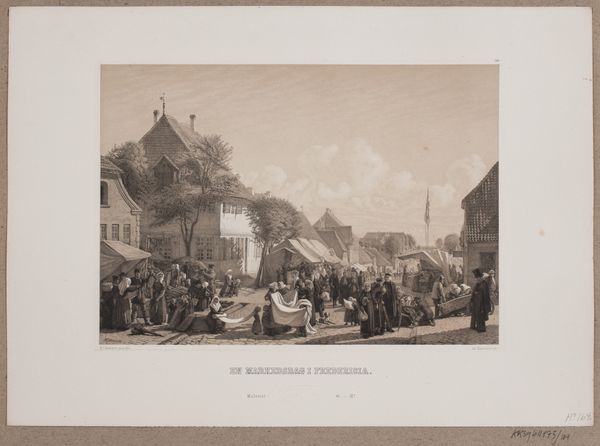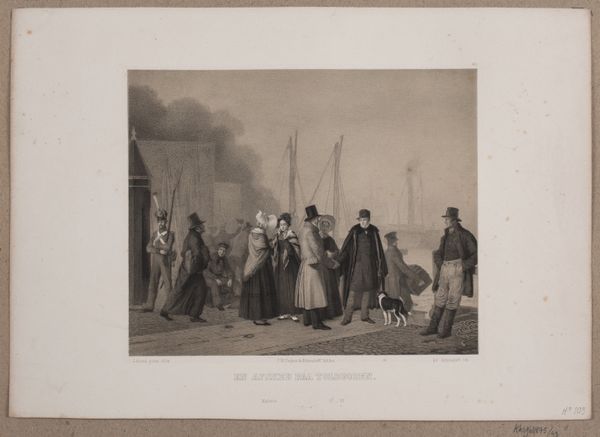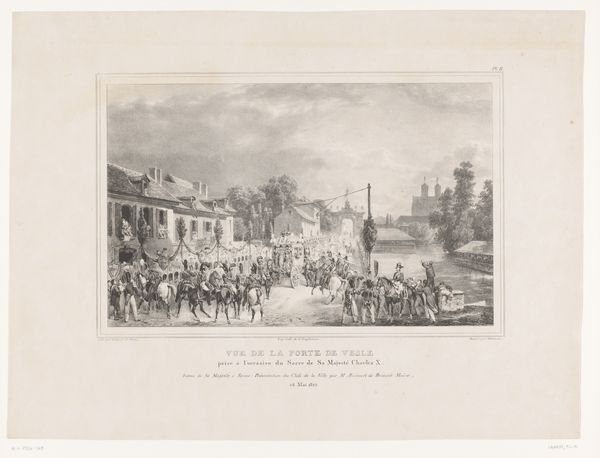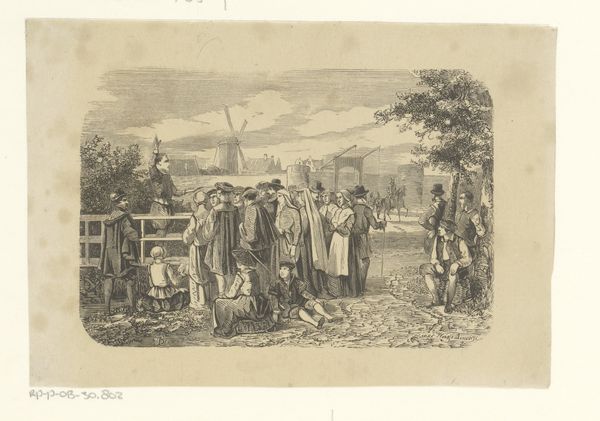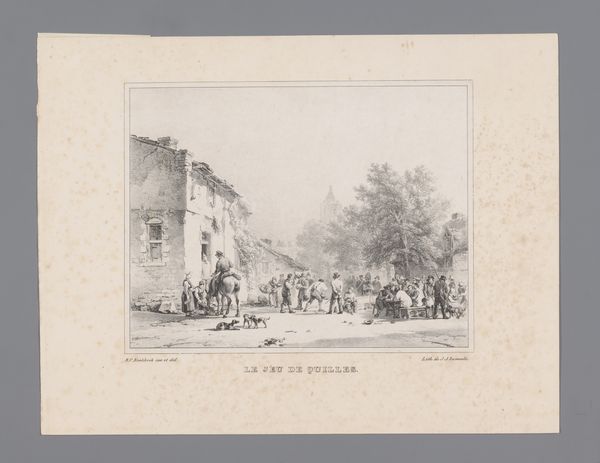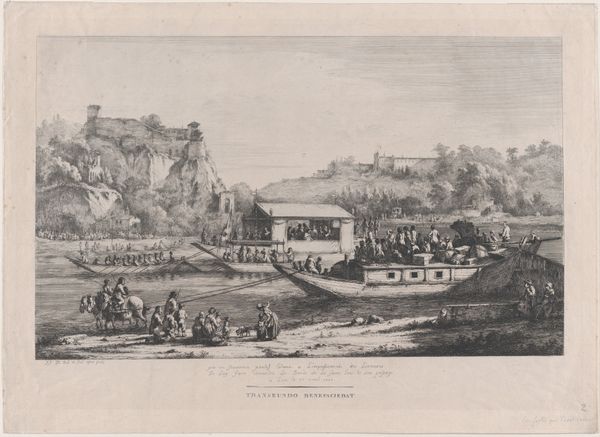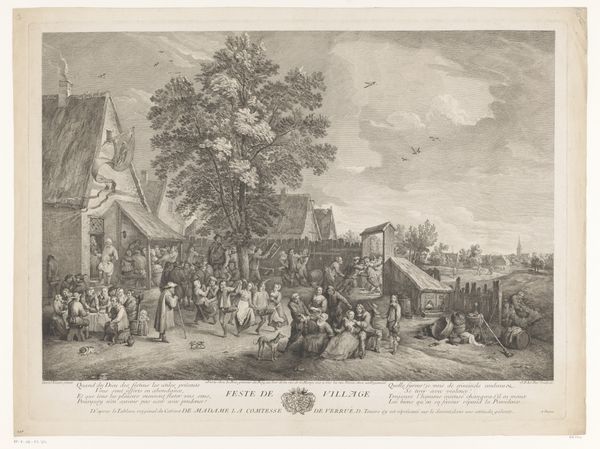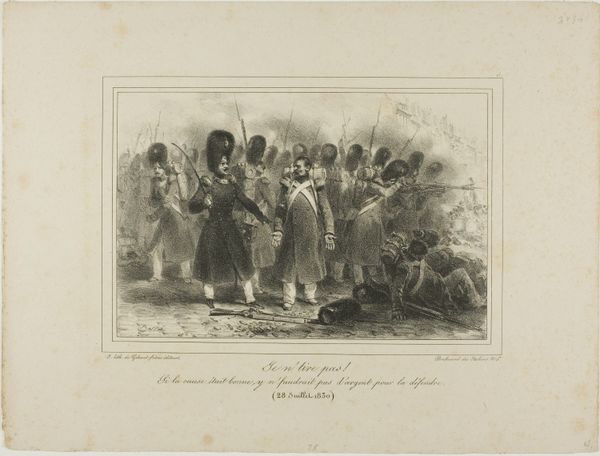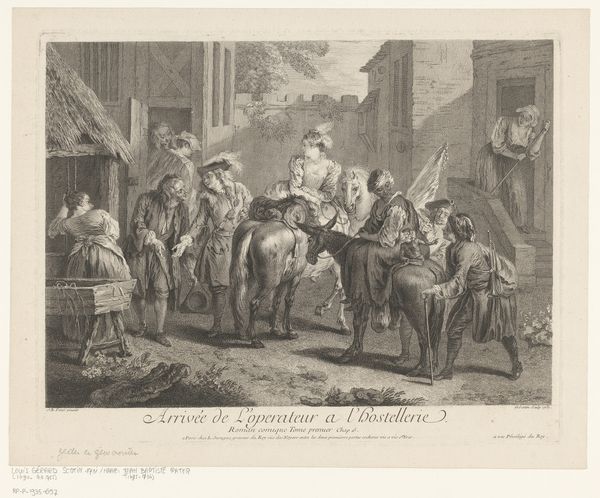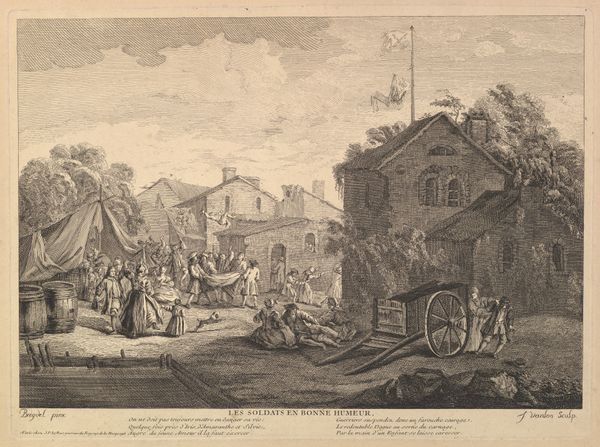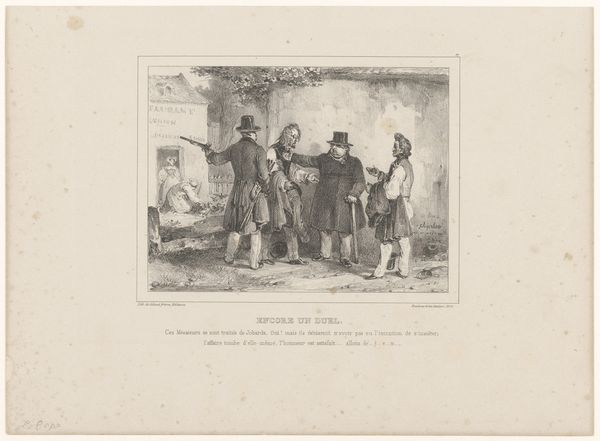
lithograph, print
#
lithograph
# print
#
landscape
#
genre-painting
#
realism
Dimensions: 290 mm (height) x 375 mm (width) (bladmaal)
Curator: This lithograph by Adolph Kittendorff, created in 1861, is titled "Sjaellandsk bondebryllup," or "Zealand Peasants' Wedding." It depicts a rural wedding scene in Denmark, doesn't it? Editor: It certainly does. The initial impression is one of bustling activity – a compressed courtyard overflowing with people, livestock, and intriguing details. It feels grounded and full of ritual. Curator: It’s important to consider the socio-political landscape of 19th-century Denmark. Kittendorff created this work at a time when national identity was being forged, particularly among rural populations. Genre scenes like this celebrated a perceived authenticity of peasant life. How might that impact the work? Editor: Indeed, the figures almost become archetypes. Notice how the bridal couple are placed centrally, framed, and visually separated from the somewhat chaotic surroundings. This elevates the significance of their union, but within a decidedly grounded, folk context. The symbolic weight placed on marriage and community continuity is tangible. Curator: Absolutely. And look at the figures with guns. Are they protectors of tradition? Is this imagery also a kind of display of patriotic strength in this era of political change? What narrative do you think it might construct, regarding masculine roles within peasant culture? Editor: Fascinating. It is interesting to notice how symbols like the rifles juxtapose with the pastoral elements. We are clearly intended to see tradition, maybe even simple pleasures as not separated from but also upheld by power. This contrast gives the image an enduring depth. What is more it emphasizes how communal support for relationships has taken so many visual forms across time. Curator: Precisely. Thinking through these images really requires understanding the power dynamics at play and seeing them as constructions rather than neutral reflections of reality. Thank you. Editor: My pleasure. Looking closer, it is apparent there is always something that we missed before and, more interestingly, that there may be other traditions alive but unnoticed, lurking in an artwork’s complex symbolic language.
Comments
No comments
Be the first to comment and join the conversation on the ultimate creative platform.
